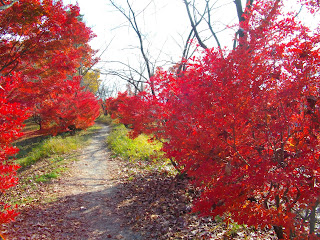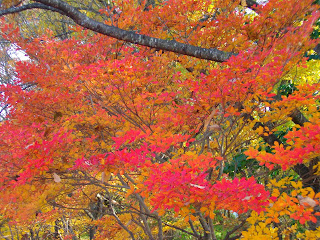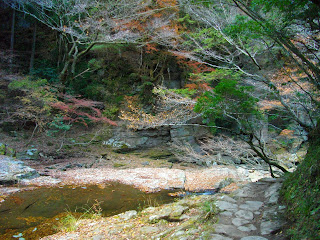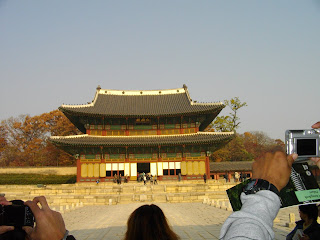Dear John Knox family,
Thanks so much for your prayers and encouragement while I serve God in Japan! God has given me a passionate heart for missions, and I'd like to tell you about a new opportunity He's presented me to serve in Pakistan. I feel strongly that missions and outreach should go hand and hand. We can tell people about Jesus and his love, but if we do not demonstrate that love through our actions, as the Bible says, our faith is dead and the seeds of faith can not be planted in others. Likewise, if we only serve people's physical needs and fail to address their spiritual needs and their ultimate need to know God's love, best displayed by the sacrifice of His son Jesus, we fail to serve the whole person. But when we preach the good news of Jesus Christ and work to fulfill the physical, emotional, and spiritual needs of those who do not yet know him, they can see the results and be drawn into his loving arms.
This March, I’m leading a mission team to Gujranwala, a city in the Punjab province of Northeastern Pakistan, to volunteer with Pakistan Evangelical and Healing Ministry. Their primary purpose is to provide for the educational, medical, and spiritual hunger of orphans, widows, and the rural poor through a medical dispensary, primary school, food for poor children and orphans, women’s education and empowerment programs, and evangelism.
Rev. Shafiq founded Pakistan Evangelical and Healing Ministry in July 1997. There are no paid staff members, and most of the work and administration is carried out by Rev. Shafiq, his wife, three friends, and two ladies on a solely volunteer basis. They currently receive no funding outside their community, including no government sponsorship. (Being a Christian organization, they can never hope for government funding.) The entire ministry is run out of Rev. Shafiq’s home and church. This is the purest form of a grass roots and non-profit organization you could ever hope to find! And unlike many Christian organizations, Pakistan Evangelical and Healing Ministry serves both Muslims and Christians in their physical needs. Bible study is offered but not required, and Bible classes are included in the primary school curriculum, but students are not required to convert in order to receive food, books, or other help.
Many interesting “coincidences” led to the making of this trip, which tells me it could only be God`s providence. Way back in 2008 when I visited Malawi, I noticed a striking difference between the Christian and Muslim communities. The Christian communities had orphanages, feeding programs, hospitals, and many other benefits that the Muslim communities lacked. One could tell what areas belonged to which religious group simply by the level of poverty. This was not usually the fault of the Christian communities; often help was offered to Muslims but for whatever reasons they simply refused to take it. But still, I realized just how underdeveloped and underfunded the Muslim communities were, and this seemed extremely unfair to me. Christians were called to love all people, no matter how hard that might be. Because of this, I felt for a long time that God was calling me to lead an evangelism/humanitarian trip to a predominately Muslim country. Last year (March 2010) I volunteered with the dalits or "untouchables" in India, but I didn't get everything I wanted out of the experience, it being a secular organization. I was considering returning to India with my the Japanese Exchange Teacher Christian Fellowship (JCF) when I spoke to my leader of last year`s India trip, and he said that if I really wanted to make a difference, I should go to Pakistan. Several weeks later, I received an email from a Japanese Christian friend about a minister in Pakistan in desperate need of help and funding. My friend simply asked me to pray for him, but everything fell into place. I contacted Rev. Shafiq and he enthusiastically accepted my offer to send a mission team. Our God is awesome!
Together with Rev. Shafiq, JCF and I will be teaching English, sharing the gospel, and building much needed concrete housing to protect from floods and monsoons, which have recently reeked havoc throughout Pakistan. But none of this could be possible without money. Some of the immediate needs of the Ministry are:
1. A projector so they can show movies to children
2. Christian material for children in Urdu
3. Primary school books and children's books in Urdu and basic English
4. Furniture for a primary school for 200 children.
5.Basic English Bible and history DVDs, CDs, textbooks and teaching guides/materials.
6. Everyday food support for poor children during school.
7. Materials for construction projects.
8. A safe vehicle for Rev. Shafiq to travel from village to village doing his ministry work.
Our group's goal is $10,000, which will cover all of the above items. A contribution of any amount will help spread the gospel to some of the most lost people in the world, as well as provide for their basic physical needs: shelter, food, and education. To donate, you can make out a check to the ministry's account listed below and give it directly to Laura or Judith Popp on or before Sunday, January 2nd, or send money directly to the ministry’s account anytime with the following information:
1-Bank Name ---- Habib Bank (HBL) Rahwali G.T. Road Gujranwala Pakistan.
2-Bank account No ---- 05180010124801.
3-Name of Account holder ---- Shafiq Masih S/o Khushi Masih.
4-Bank Swift Code ------ (H.A.B.B.P.K.K.A)
5-Contact Phone ------------ 0092-300-6478564
Some banks do not allow you to send money to Pakistan. If this is the case, you can send money at any Western Union location worldwide to another Western Union location in Gujranwala, Pakistan. Visit http://www.westernunion.com to find the location nearest you, or use their online service. If you have any questions about the project or how to donate, please email me at laurajanepopp@gmail.com.
Many thanks for your commitment to serving the rural poor and spreading the gospel in one of the most unreached countries in the world. In the Urdu language or the people you will be helping: Bahut Shukriya!
That's what I wrote to them. Pastor Dino interviewed me at John Knox church on Sunday, December 26th (today) in front of the congregation to ask about my mission activities. It's really awesome to have their encouragement.
To give you a visual, here's a picture of me with some village kids from India in front of a house we built. Pakistan used to be united with India, so the people there will probably look similar.

And here's a picture Rev. Shafiq sent me of their Bible class:

And a prayer meeting:

And serving food:


Christmas morning at 5:00am, Rev. Shafiq called from Pakistan. I picked up just as he was wishing me and my family a Merry Christmas. Then he told me about their Christmas program for the orphans and widows and some more needs of the ministry, like the vehicle. He travels to the three villages he serves by motorbike, which is really dangerous because it isn't uncommon for Christian pastors to get shot when they travel like that. He really needs a car, and I told him I'd see what I could do to get him the finances he needs. We also had a really nice talk about what God is doing in our lives. Sometime later, one of my Chinese friends called to ask if I wanted to hang out. Mom woke up and found both of the messages on the machine and thought that rather strange. What can I say, I have friends all over the world! I count it as one of my greatest blessings.
Anyway, Merry Christmas, and Happy New Year!
Laura Jane Popp (L. J. Popp)

















































